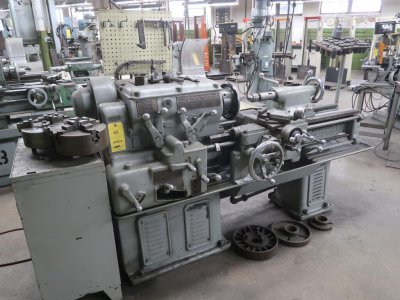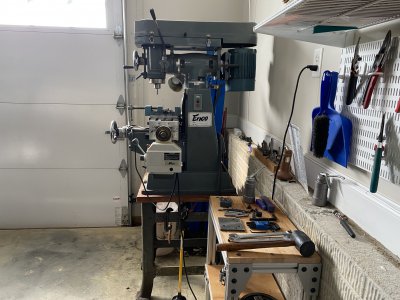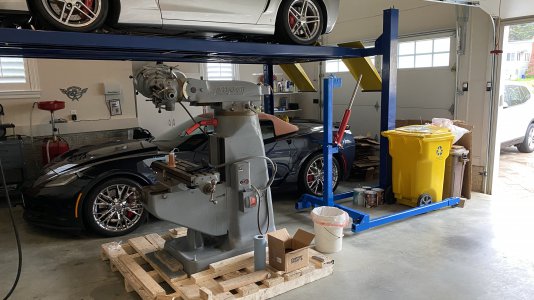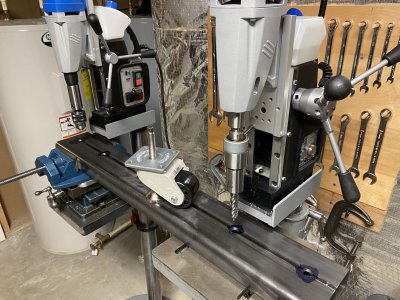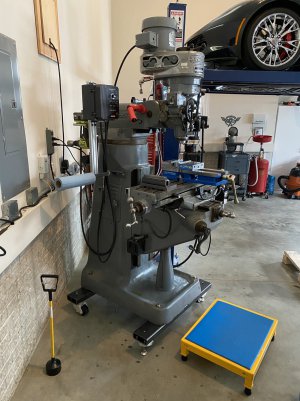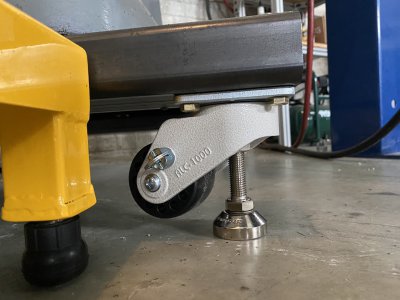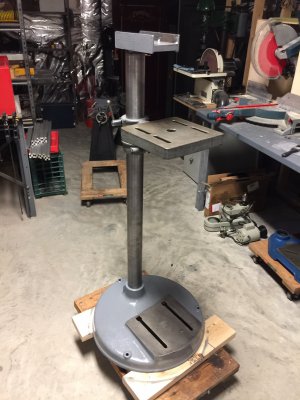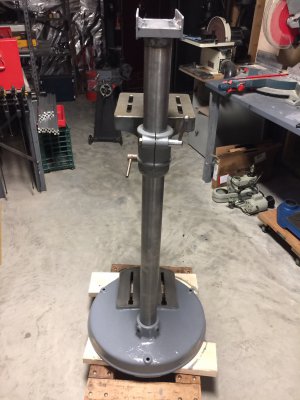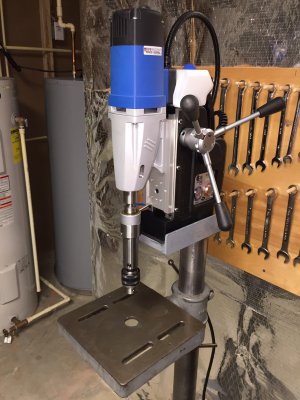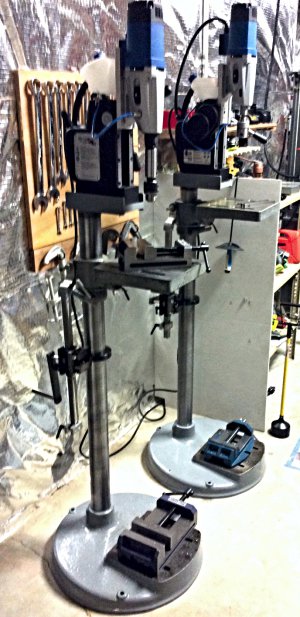As I mentioned above, I had a 6" x 26" Enco bench knee mill for over 25 years. While I used it over that entire period, I didn't use it every day. Never had any problems with it. Encos at that time were made in Taiwan, although the same design is used by Chinese manufactured mills today, and it is hard to tell them apart. You can't necessarily trust the ads, etc., as to their origin.
Taiwan built machines are generally reported to be good, as was my experience with one. Chinese stuff not so much. My Enco was not particularly rigid, although I did much more drilling than milling on it. The main problem was spindle height above the table. Like many others I toyed with adding a riser, which of course would affect rigidity to an extent.
Being in my early 80s, I was intimidated by the prospect of moving up to a 2,000 lb. Bridgeport. Buying one sight unseen, having it shipped, picking it up and bringing it home, getting it into my garage, getting it off the pallet and into place, and learning how to use it all scared me to death.
I bit the bullet and did it though. I watched eBay auctions for weeks until I found one with a J head, 36" table, step pulley drive, and located at a reputable dealership on my side of the Country. It was pretty plain, with no accessories. It had been repainted by the seller, so it was hard to judge the original appearance. The table surface was perfect, and the Y axis ways looked ok from the pictures. The seller sent me a walk around video showing it running.
The seller arranged shipping to me (Rhode Island to Maryland), which I negotiated into the price of $3,500. A young neighbor from across the street used his truck to help me go pick the mill up in Baltimore. We used a drop bed trailer, which the shipping company had no problem loading with a forklift.
When we got to my house, we backed the trailer up to my garage, lowered the trailer bed, and used a rented pallet jack to pull the mill off, I put the mill in the middle of the garage, between the cars, while I figured out how to get it off the pallet and moved into place without the pallet jack.
My engine hoist wasn't up to the job of lifting 2,000 lb., so I decided to use a cable puller (comealong) to pull it off the end of the pallet. As the first end cleared, I bolted the first of two rectangular support tubes (2" x 5" x 3/16" wall) to the two front bolt holes in the base. I bolted adjustable casters to each end of the support tube. The casters supported the front of the mill as I slid the front off the pallet.
As the rear of the mill neared the edge of the pallet, I used a toe jack to raise each side enough to block it up. I then slid the pallet jack out, and bolted a duplicate support tube with casters to the rear of the mill. I used the toe jack to lower it to the casters, and used a pry bar to move it to it's ultimate location. At 2,000 lbs., you don't simply roll it around like a tea service cart.
The mill turned out to be great except for the one-shot oiling orifices being clogged up, as many if not most are. I wasn't about to disassemble the whole thing to fix that, so I am manually oiling it, which is fine for my level of usage.
I added an X axis power feed, a VFD, a DRO, and a 6" Kurt vise as shown in the pictures below. The first is of my Enco, which I sold for half the cost of the Bridgeport.

